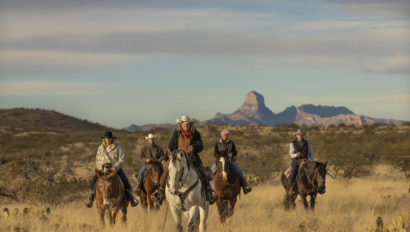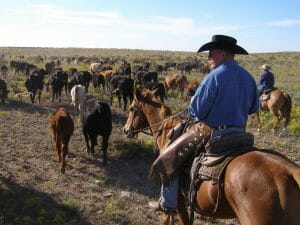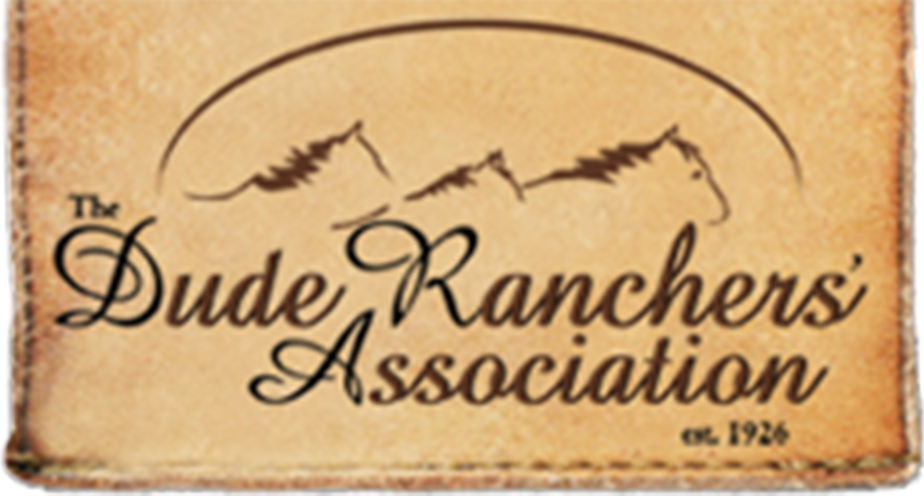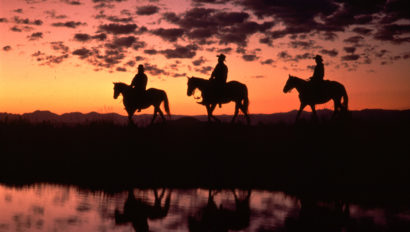
 Burnt Well Cattle Drive – by Mark Bedor
Burnt Well Cattle Drive – by Mark Bedor
Anybody who’s ever seen the movie City Slickers has dreamed about going on a cattle drive! I was fortunate enough to be one of ten people who had come to Burnt Well Guest Ranch in New Mexico from as far as Florida and California to go on a weeklong cattle drive to move more than 150 cows to their summer pasture. The cattle drive would put us in the saddle of that real cowboy world all week. The chance to do this was a dream come true for many in our group, like 73-year-old Kathy from New Jersey. “I’ve always wanted to do this,” she told me as we rode along that first morning. “I figured if I don’t do it soon, it’s gonna be too late.”
Starting out Monday on the Burnt Well’s 24-square mile spread (relatively small by arid New Mexico standards), a willing, yet inexperienced group of guests would help push the herd across four neighboring ranches, before finally arriving at Bonney Canyon Ranch, where Kim Chesser, owner of Burnt Well along with his wife Patricia, had leased pasture land to graze those cattle for the summer. When they say “pushing cows,” that is an accurate description. Without constant pressure, the herd of 156 animals including 30 heifers (females that had never given birth), six bulls, and 60 pairs of momma cows with brand new baby calves, would just stop and eat.
The unspoiled ranch lands we rode through are the very definition of wide open spaces. With a rugged beauty all its own, this horseback view of New Mexico is a jaw-dropping sight to people who spend most of their lives in a congested city. “I’ve never been in a place this open in my life,” beamed Liz Edwards, here from Boston with her husband Chris. “There’s so much beauty.”
The couple had flown in a day early, and got a taste of the area’s cowboy culture when they made a side trip to nearby Ruidoso, New Mexico. Saturday night they dined and danced at the town’s very Western Texas Club. “Just a completely different side of the United States,” marveled Chris. “We’re all Americans… same as us… but it’s a totally different world.” The cattle drive gave us the chance to visit with some of the area’s real working cowboys, as the ranches we crossed provided horseback escorts through their property. These guys are real pros and they make stringing out a herd and keeping it moving look easy. “This is the fun part of cowboyin’,” smiled rancher Kevin Floyd.
As we rode along, Kevin talked of the very difficult challenges ranchers face, not the least of which is a largely urban public’s misguided perceptions of the cattle industry. “I saw an article… a serious editorial in a newspaper… that said if all you ranchers would go to the grocery store like the rest of us to get your meat…you wouldn’t be harming animals!” There are lots of tough issues. Ranchers can be sued by trespassers who get hurt on their property. Sheep ranching, once a thriving business here, is being decimated by out-of-control predators. Inheritance taxes and land values make it next to impossible for young people to get into ranching. “But it’s still a wonderful life,” smiles Kevin, as we ride along, enjoying perfect horseback weather on a cool and cloudy morning. “You get to be with God out here.”
That Wednesday morning we were up, with bedrolls, tents and personal gear packed in time for breakfast at six. We’d been told to be prepared for a twelve-hour day in the saddle. And that was no exaggeration. Local horse trader and veteran cowboy, Dave McIntosh saddled up to ride with us on what would be the toughest day of the trip.
It started out easy enough, with Dave showing us how it’s done, we had those cows stepping out nicely. “Most everybody thinks that cattle drive from the back,” revealed Dave, when I asked for his views on the best way to drive a herd. “But if you work the sides and keep ’em pushed in… and keep the front end goin’ somewhere… the back end’ll want to stay up with the front.”
Lunchtime found us at the base of that imposing barrier known as Border Hill. Steep and rocky, it wasn’t the easiest place to just ride a horse, let alone drive cattle. “It’s gonna be tough,” warned wrangler Tim. It was tough, and we had to push hard on those cows and our horses every step of the way. Slowly but surely, we climbed that steep and rugged incline.
We made it to the top and at six that evening, we reached the corrals where we’d park the herd for the night and refill our depleted canteens. After settling the herd in for the night we still had another hour’s ride to get to camp. Finally, we arrived! We’d been in the saddle almost twelve hours on the dot when we stepped off those horses.
As we plopped into camp chairs, and savored a cold beer, the trials of a long day were suddenly replaced by a great sense of both achievement and camaraderie. “We all came together as strangers… and look what we accomplished,” reflected Linda from Minnesota. “That’s so cool!” And many of those in our group of ten had done it with very little riding experience. Linda, an accomplished rider who owns her own horse back home, was very impressed with not only the horse she rode, but the other mounts of the Chesser string. “I look at Cheyenne and Mickey and Mo,” she observed of the horses the beginners had ridden. “They take good care of people.”
After three days and some 35 miles, we’d spend the next two nights at this last camp. We had one short two-hour ride Thursday morning to push the cows from their holding pens to the pasture where they’d spend the summer. That afternoon we had another easy ride, checking some five miles of fence with wrangler Tim, a great chance to relax in the saddle and soak in the beautiful vistas of New Mexico. There were other treats to enjoy before we’d ride out to the trailhead on Friday morning.
Thursday evening Patricia’s fiddle came out, and our camp meadow became an impromptu dance floor filled with fun and laughter. And in this part of New Mexico, where you can’t see any lights of civilization and the heavens don’t shine any brighter, many of us also took advantage of the perfect dry weather to sleep out under the stars. Staring at the stars from a sleeping bag is not something Chris and Liz do very often in Boston. “We’re officially converted!” she laughed on Friday morning. It had been quite a week, not to mention all the wildlife we saw, like abundant mule deer, jackrabbits, wild turkeys, and even a bobcat!
Yes, there were moments when it was hard, but as we rode out Friday morning I felt so good. Restored. Alive. And I wasn’t the only one. “I’m coming back actually feeling better than when I arrived,” said 69-year-old Addie. “Very refreshed! Coming back. It’s something a lot of guests do who visit the Burnt Well Guest Ranch. I’d like to come back myself.
Dude Ranchers’ Association
Burnt Well Guest Ranch is a member of The Dude Ranchers’ Association which was formed in 1926 to preserve this special way of life and the wonderful environment in which dude ranching takes place. When you vacation at a Dude Ranchers’ Association Dude Ranch, you can be sure of a quality vacation.
Membership in the Association is a rigorous two-year inspection and approval process, to assure that guests are treated to genuine western hospitality combined with the lodging industry’s highest standards. Our Dude Ranches offer all-inclusive vacations that are perfect for everyone, from the littlest rancher to Grandpa and Grandma. Horseback riding, hiking, petting zoos, swimming holes, rodeos, fishing, games, skeet shooting, archery, art classes, cooking classes and more await your discovery on your next Dude Ranch Vacation. Horses, Hats, History and Hospitality – they’re the foundation of every ranch. There is a little cowboy in all of us… come find yours!
For more information about Burnt Well Guest Ranch, you can visit duderanch.org or call 866-399-2339.






